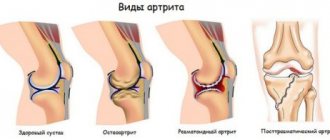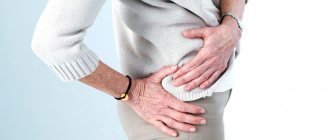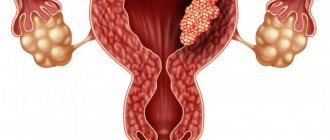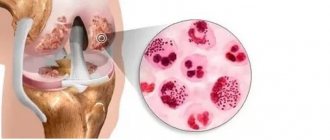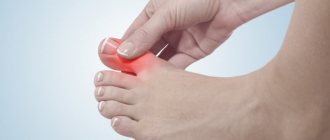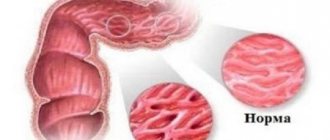When a child is diagnosed with juvenile rheumatoid arthritis, parents usually perceive it very hard, as a tragedy in the family and a sentence for life. Although this is not at all true. In most such cases, it is up to the sick child and his parents whether he will be forever confined to a stroller or whether he will lead a completely normal life, run around with other children and play. The development of this disease can be slowed down if desired, and even more so, this is not a death sentence for your child and you.
Causes
The disease is largely due to hereditary factors; environmental conditions also play an equally important role, among which infectious attacks play a key role in the development of juvenile arthritis. In general, there are a large number of reasons contributing to the onset of the disease, the most common include:
- viral or bacterial-viral infection;
- excess solar radiation (insolation);
- hypothermia;
- vaccinations - vaccinations become especially dangerous in the case of ARVI, bacterial infection (existing or recently transferred);
- joint injuries.
It should be noted that the participation of infections in the emergence of JRA is only an unproven assumption. To date, only the relationship of the disease with previous ARVI and vaccinations - against measles, mumps, rubella, hepatitis B has been identified. Moreover, it has been recorded that the post-vaccination onset of JRA is observed more often in girls.
The influence of beta-hemolytic streptococcus, intestinal infections or mycoplasma on the development of JRA, suggested by some researchers, is considered by the vast majority of rheumatologists to be a misconception. At the same time, it is recognized that the above infections provoke the development of arthritis, which under certain circumstances transforms into JRA.
But the etiological influence of viral infections on the formation of JRA is not so obvious. Today, more than one and a half dozen viruses are known that can provoke the development of acute arthritis - among them are hepatitis, rubella, Coxsackie, Epstein-Barr, etc. viruses. Specially conducted studies of twin pairs, as well as immunogenetic data, allow scientists to speak about hereditary predisposition.
Diagnosis of juvenile arthritis
Diagnosis of juvenile arthritis begins with a history of the disease. A highly specialized specialist, a rheumatologist, conducts a personal examination of the patient, learns about his lifestyle, hereditary diseases, bad habits, etc. During the examination, the specialist palpates the areas of the affected joints. The doctor must indicate in the patient’s medical record all the symptoms of the disease and the patient’s complaints.
After the initial examination, the patient is sent for additional diagnostics. To do this, he will have to undergo laboratory and hardware examination:
- Clinical and biochemical blood tests (the purpose of the study is to determine the indicators of red blood cells, platelets, leukocytes, etc.).
- General urine analysis.
- A blood test, the purpose of which is to identify bacteria, the presence of which may indicate infection of the bloodstream.
- A test performed by an orthopedic surgeon who takes samples of synovial tissue and fluid.
- Analysis of bone marrow samples to detect leukemia.
- X-rays, during which specialists identify fractures and other damage to bone tissue.
- Computer or magnetic resonance imaging.
- Scanning bone and joint tissues, through which any changes in their structure can be detected.
- Testing for: Lyme disease; various viral infections; to determine the erythrocyte sedimentation rate; to identify antibodies that provoke the development of arthritis, etc.
During diagnostic procedures, patients undergo special testing, the purpose of which is to identify antinuclear antibodies. This test shows an autoimmune reaction of the human body, in which self-destruction of the immune system occurs.
Modern medicine defines 4 degrees of this disease:
- high – 3;
- average – 2;
- low – 1;
- remission stage – 0.
In the event that, when juvenile arthritis is detected, the patient does not have pronounced symptoms and signs of this disease, the doctor will have to make a diagnosis based on the exclusion of other diseases:
- lupus;
- malignant neoplasms;
- bone fractures;
- infectious diseases;
- fibromyalgia;
- Lyme disease.
On the subject: Traditional methods of treating arthritis
What is the danger
There is almost a 50% chance of a favorable outcome of the disease. Remission can last up to several years. However, even after a stable remission, a sudden exacerbation may begin. Almost a third of patients are faced with the continuously relapsing nature of JRA.
Children who have had an earlier onset of the disease, as well as adolescents who have a positive rheumatoid factor, are at high risk of developing a severe form of arthritis, accompanied by disability due to impaired functioning of the musculoskeletal system. Children with late onset of the disease may develop into ankylosing spondylitis. Children with uveitis risk losing their vision in 15% of cases of JRA.
Mortality is quite low, it is usually observed with:
- lack of treatment;
- infectious complications;
- development of amyloidosis.
What is seronegative rheumatoid arthritis: causes, symptoms and treatment
Until now, doctors have not been able to definitively figure out the reasons why juvenile rheumatoid arthritis progresses in children. The etiology of the disorder is based on the negative impact of external and internal factors on the baby’s condition. The following are the reasons why childhood arthritis develops:
- genetic factor;
- severe viral diseases;
- bacterial infectious lesions;
- growth spurts;
- joint injuries of varying complexity;
- hypothermia or overheating of the body;
- complications arising after vaccination, which was carried out during or immediately after recovery from ARVI;
- intramuscular or intra-articular administration of protein medications;
- immune abnormalities of congenital or acquired form.
The disease has a hereditary predisposition.
Such a deviation in a child is not so rarely diagnosed, but without timely treatment it can lead to serious and irreversible consequences. Juvenile rheumatoid arthritis damages joints, internal organs and vital systems. A feature of the pathology in adults is that in children the destructive process does not stop only at the movable joints.
What is seronegative rheumatoid arthritis? What are the characteristic manifestations of this disease and what treatment methods are used in the process of its therapy?
Seronegative arthritis is significantly different from other types of pathological disorders occurring in the body. The difference between this disease is the absence in the patient’s blood of one of the main pathological markers – rheumatoid factor.
Today, the seronegative form of rheumatoid arthritis is quite common. This disease is detected in approximately 20% of patients with rheumatoid arthritis.
Rheumatoid factor is a unique kind of autoantibody, which is synthesized during the progression of the disease in the synovial membrane area.
Such antibodies are not always a mandatory factor in the development of pathology. But the rheumatoid factor is very important, so it is always taken into account in the process of diagnosing the disease. In addition, it was found that rheumatoid factor takes part in the formation of rheumatoid nodes located under the skin and certain specific extra-articular changes.
The seronegative initial stage of arthritis is acute. However, at an early stage of progression of the pathology, fever may appear, during which body temperature changes within 3-4 degrees.
In addition, the patient initially experiences chills. As the disease develops, characteristic symptoms such as:
- weight loss;
- enlarged lymph nodes;
- the appearance of muscle atrophy.
Symptoms
During the development of the disease, one or several joints may be involved in the pathological process. A characteristic feature of the disease can be considered uneven damage to the joints.
Often, at the initial stage of development of seronegative arthritis, large joints, such as the knee, are involved in the pathological process. And with further progression of the disease, small joints (feet, cysts, wrist joints) are affected.
In the presence of this form of arthritis, the morning stiffness characteristic of other types of the disease almost does not appear, or this symptom is barely pronounced. Moreover, deformation of the joints is not detected during the examination, and the functioning of the joints is almost not impaired.
In addition, during examination, rheumatoid nodules do not appear in the body. In some cases, the patient exhibits various manifestations of visceritis and vasculitis.
The most common signs of seronegative arthritis include lack of stiffness in movements in the morning and asymmetrical damage to large joints, which occurs at the initial stage of the disease. And with further development of the pathology, symptoms of polyarthritis appear, which affects small joints, often the wrist.
At the initial stage of disease progression, symptoms of pathological damage to the hip joints appear. Extra-articular signs include damage to muscles and elements of the lymphatic system. And in case of prolonged progression of the disease, the kidneys are affected.
Diagnostics
A characteristic feature of the disease when diagnosing it is the absence of rheumatoid factor during the Waaler-Rose reaction. Blood tests reveal a minimal increase in ESR. Compared to the parameters for the appearance of other diseases, this indicator is low.
The seronegative type of the disease is characterized by the detection of an elevated IgA level, in contrast to the sign that is revealed during the study when a seropositive variant of the disease is detected.
During the X-ray, the unevenness of erosive processes is determined with the appearance of early ankylosis of the joints that are part of the bones.
In addition, X-ray examination makes it possible to detect the difference between the severity of damage to the wrist joints and subtle changes in the small joints that make up the bone skeleton.
The leading diagnostic method that allows you to determine the presence of seronegative arthritis is X-ray. This technique makes it possible to identify such disorders in the body as:
- the occurrence of minor symptoms of osteoporosis;
- asymmetrical erosive lesions;
- minimal foot deformation;
- the ankylosing process dominates over the erosive one.
Moreover, in the later stages of disease progression, severe lesions of the wrist joints and minor disturbances in the functioning of the interphalangeal and metacarpophalangeal joints appear.
Treatment
Unfortunately, the disease is difficult to treat even with the use of basic therapy and drugs such as immunosuppressants. As the pathology progresses in the patient's body, secondary amyloidosis occurs.
It should be noted that in the process of choosing the basic method of therapy, it is necessary to take into account the increased risk of side effects when taking D-penicillamine.
If conservative treatment of seronegative rheumatoid arthritis does not bring positive results, then the attending physician may recommend synovectomy - surgical treatment.
With the help of such an operation, the consequences of the inflammatory process in the joint can be cured. During surgery, the doctor removes granulations, which eliminates inflammation, which makes it possible to stop the destructive process.
When seronegative rheumatoid arthritis reaches the third or fourth stage of progression, then surgical endoprosthetics is performed. This type of surgical treatment allows for the natural functioning of the joint to be achieved.
If there is no acute manifestation of symptoms, then the patient can undergo sanitary-resort treatment. This therapeutic technique involves taking a variety of therapeutic baths:
- salt;
- radon;
- iodine-bromine;
- hydrogen sulfide.
In addition, sanitary spa treatment includes treatment of arthritis with mud, which has a beneficial effect on the human body.
Symptoms
The main clinical manifestation of the disease is arthritis. Joint damage is accompanied by the following symptoms:
- soreness;
- swelling;
- deformation;
- restriction of physical activity;
- increased temperature in the joint area.
Medium and large joints are most often affected, namely the hip, ankle, wrist, elbow and knee. The joints of the hand are much less frequently affected. JRA can also affect the maxillotemporal joints and the cervical spine.
The changes are accompanied by the following manifestations:
- inflammation that destroys tissue (cartilage, bone);
- narrowing of the joint spaces, sometimes leading to ankylosis.
Also, in addition to joint damage, the following symptoms are possible:
- Increase in temperature (sometimes quite significant). Usually observed in the morning and is accompanied by increased pain, chills, and rash. When the temperature drops, increased sweating is often observed. The period of fever can last for years, often causing joint damage. The rash that appears can be of a different nature. It may not be accompanied by itching and disappear quickly. Locations: face, chest, back, abdomen, joint area, limbs, buttocks.
- Heart damage. It is accompanied by chest pain, pain in the heart or in the upper abdomen. There is a lack of air, the child has to take a sitting position in bed. The child lacks air, he becomes pale, the nasolabial triangle and fingers turn blue. The wings of the nose swell, the legs and feet swell.
- Damage to the serous membranes.
- Lung damage – difficulty breathing, cough.
- Damage to the abdominal organs – abdominal pain.
- Enlarged lymph nodes up to 6 cm. The nodes are usually painful and mobile.
- Enlarged spleen and liver.
- Eye damage – it is more common in younger girls. The eyes are red, teary, the contour of the pupil is uneven. Photophobia and decreased visual acuity are observed. If the outcome is unfavorable - glaucoma and blindness.
- Growth retardation. It is especially evident during the protracted course of JRA.
- Osteoporosis is accompanied by a decrease in bone density, leading to increased fragility. Pain syndrome is observed. The most severe manifestation of osteoporosis is a compression fracture of the spine.
Types and forms of the disease
JRA is a complex and dangerous disease. In adults, symptoms appear somewhat more slowly. Treatment should begin immediately after diagnostic confirmation of the pathology.
Experts identify several types of dangerous illness:
Oligoarthritis - the disease manifests itself in symmetrically located joints and affects both large and small joints. The first signs of oligoarthritis are observed in children after one year.
- Polyarthritis - affects more than four joints at the same time. Juvenile polyarthritis is considered to be the most severe form of the disease, since all joints are affected, including the jaw and neck. This form of the disease is most common in girls.
JRA is a disease that can occur in acute or subacute form.
The acute form is characterized by rapid development of symptoms. In the subacute course, symptoms appear on only one side of the body, and the development of symptoms occurs very slowly. Over time, arthrosis affects the joints of the other half of the body. With timely treatment, the prognosis is favorable, since the subacute form is treatable.
Diagnostics
The diagnosis is based on the results of an examination by a rheumatologist and a whole range of instrumental and laboratory tests:
- peripheral blood analysis;
- analysis of biochemical parameters;
- analysis of immunological parameters.
The following studies are also recommended for all patients:
- electrokariography;
- Ultrasound of the heart, kidneys, abdominal cavity or;
- chest x-ray;
- x-ray of joints;
- X-ray of the spine and sacroiliac joints – if necessary.
In addition, sick children are examined to identify parasites, beta-hemolytic streptococcus, chlamydia, herpes virus, intestinal bacteria, and cytomegalovirus.
If difficulties arise in making a diagnosis, an immunogenetic study must be performed. After prolonged use of hormonal and painkillers, esophagogastroscopy is indicated. Also, all children suffering from joint damage need to be examined by an ophthalmologist.
Symptoms and complications of arthritis in children
The clinical picture of juvenile rheumatoid arthritis is extremely diverse. In the vast majority of cases, the disease gradually gains momentum, and the acute period can last more than 6 months. Distinctive features of the development of juvenile rheumatoid arthritis are:
- symmetry of joint damage;
- pain when moving, and then at rest;
- morning stiffness in the joint lasting more than 1 hour;
- swelling of the damaged joint;
- no change in skin pigmentation over the affected joint;
- joint deformities;
- ankylosis;
- contractures.
All these phenomena are present to one degree or another in all cases of juvenile rheumatoid arthritis. Among other things, an indicative phenomenon for this condition is atrophic change in muscles. Signs of atrophy are often noticeable within 1-2 weeks after the onset of the acute period of the disease. It is currently unknown what exactly leads to such rapid progression, but, nevertheless, it is observed in almost all cases of the development of this joint disease.
The process of development of JRA, as a rule, begins with damage to the shell of the joint, and then moves on to its constituent elements, which leads to the appearance of deformities. At this time, the body seeks to reduce the destruction of the joint by triggering the mechanism of cell division in this area, which leads to the formation of a whole layer of cells that covers all the elements of the joint, making it immobile and increased in size. Extra-articular manifestations of the development of juvenile rheumatoid arthritis include:
- increased body temperature;
- skin rashes;
- increased sweating as the temperature drops;
- difficulty breathing accompanied by coughing;
- enlarged liver and spleen;
- heartache;
- redness of the eyes, accompanied by lacrimation;
- enlarged lymph nodes.
Extra-articular symptoms of rheumatic manifestations are not always fully represented. The clinical picture and symptoms depend on the degree of disease progression. It is worth noting that despite the fact that juvenile arthritis is a chronic disease, the acute period can last more than 6 months. And yet, with proper treatment and care for the patient, remission can be achieved, which lasts more than 1 year, and sometimes more than 10 years.
Methods of prevention and treatment
Treatment of juvenile rheumatoid arthritis, being a serious problem, requires complex therapy:
- drug therapy;
- physiotherapy;
- orthopedic correction;
- mode;
- diet.
JRA therapy boils down to the following goals:
- elimination of the inflammatory process;
- elimination of articular syndrome;
- preservation of joint functions;
- prevention of disability due to joint destruction;
- ensuring remission;
- improving quality of life;
- preventing side effects.
Drug therapy is divided into two types:
- immunosuppressive (suppresses immunity) – inhibits destruction, prevents invalidation;
- symptomatic (glucocorticoids and non-steroidal anti-inflammatory drugs) – reduces pain, inflammation, does not prevent joint destruction.
Glucocorticoids are hormonal drugs that have an anti-inflammatory effect. They are divided into:
- intravenous - methylprednisolone, prednisolone;
- intra-articular - methylprednisolone, triamsinolone, betamethasone;
- for oral administration – methylprednisolone, prednisolone.
Treatment with glucocorticoids (internal administration) begins after other treatments have failed. Glucocorticoids are not recommended for children under five years of age or during adolescence due to the possibility of growth retardation. Intravenous administration effectively suppresses the inflammatory process; it is used, as a rule, for systemic manifestations of the disease.
Causes of juvenile rheumatoid arthritis
The exact causes of the development of the disease have not been established to this day. However, based on research, doctors are inclined to believe that genetics and heredity are directly related to the appearance of this disease.
ON A NOTE! Children's juvenile arthritis is 2 times more common in girls.
Factors that can provoke changes in body processes and subsequently lead to a pathological condition:
- contact with a viral or bacterial infection;
- a drop in body temperature to critical levels (hypothermia);
- joint injuries in the past;
- prolonged exposure to the sun;
- untimely vaccination as a preventive measure.
After a collision with one of the environmental factors, the immune system changes so that its cells are identified as foreign. Simply put, an autoimmune reaction is formed, which is the basis of juvenile rheumatoid arthritis (JRA).
Immunosuppressive therapy
This type of therapy plays a key role in the treatment of rheumatoid arthritis. As a rule, it is the selection of the drug, the timing and regularity of treatment that is decisive in the treatment process.
Immunosuppressive therapy begins immediately after diagnosis. It is long and continuous. The drug is discontinued when at least two years of clinical and laboratory remission are achieved. When immunosuppressants are discontinued, an exacerbation is usually observed.
The main drugs for the treatment of JRA: cyclosporine A, leflunomide, sulfasalazine, methotrexate. These drugs are very effective, well tolerated, causing virtually no side effects even if taken for many years.
Drugs such as chlorambucil, azathioprine, cyclophosphamide are used very rarely due to the high frequency of side effects.
D-penicillamine, hydroxychloroquine, and gold salts are almost never used due to low efficiency.
Treatment with immunosuppressants is accompanied by the following tests:
- general blood test (erythrocytes, hemoglobin, platelets, ESR, leukocytes, leukocyte formula);
- analysis of biochemical parameters (every 2 weeks).
Treatment of juvenile rheumatoid arthritis
Juvenile arthritis is a serious and complex disease that requires complex treatment. Treatment is aimed not only at eliminating pain and inflammation in the joint area, but also at minimizing the future consequences of the pathological phenomenon.
In the active phase of the disease, the patient is admitted to a hospital, where he is monitored by medical workers. During the inactive period, outpatient monitoring is required, as well as sanatorium-resort treatment. In the latter case, a therapeutic regimen is drawn up for the child, the basis of which is drug treatment, physical therapy, massage sessions, and physiotherapy . A positive result is possible only with the above treatment on a long-term and uninterrupted basis under the strict supervision of a leading physician. Dieting is also included in this complex.
Drug treatment
Drug therapy is divided into two categories:
- medications to relieve symptoms of the disease. This group includes non-steroidal anti-inflammatory drugs (NSAIDs), glucocorticoids.
- taking immunosuppressive drugs (immunosuppressive treatment) – suppression of unwanted reactions of the immune system.
Nonsteroidal anti-inflammatory drugs are medications that can eliminate pain, but are unable to completely eliminate the inflammatory reaction in rheumatoid arthritis. The most used means include:
- Ibuprofen;
- Meloxicam;
- Nise;
- Diclofenac.
ON A NOTE! , the drug Nise (its analogue - Nimesulide has proven itself to be excellent . In medical practice, it has been noted that of the entire list of non-steroids, this drug has the gentlest effect on the body of children and rarely causes adverse reactions.
Corticosteroids (hormonal anti-inflammatory drugs) are used to accelerate the relief of inflammation in the joint area. The main advantage is that drugs in this group are eliminated from the body in a short time. The main disadvantage is the manifestation of many side effects. Commonly used glucocorticoids in the treatment of juvenile arthritis:
- Prednisolone;
- Betamethasone.
Juvenile rheumatoid arthritis in adult children with damage to internal organs can be treated through pulse therapy. With this method, hormonal medications are administered intra-articularly in high dosages.
ATTENTION! This method is prohibited from being used on children under 3 years of age, as growth may be delayed.
Immunosuppressive drugs are drugs that inhibit the activity of the body’s immune system. For childhood juvenile arthritis, this group of drugs must be used for a long time, this is the only way to achieve the desired result. It should be noted that the frequency of administration is small. Medicines must be taken 3 times every 7 days. Commonly used immunosuppressants:
- Leflunomide;
- Methotrexate;
- Cyclosporine.
ATTENTION! The prescription of drugs occurs in accordance with the characteristics of the child’s body and the development of the disease.
Methotrexate is a popular drug for the treatment of juvenile rheumatoid arthritis. Its use gives excellent results. It is tolerated favorably by most patients. However, at the beginning of treatment, side effects such as nausea and vomiting are possible. The medicinal dose is selected by the attending physician in accordance with the weight and height of the patient. Spontaneous cancellation is unacceptable. When the specialist decides to end the treatment, this usually happens after 2 years of remission.
Prevention
Unfortunately, it is not possible to prevent JRA, since there is no reliable data on the causes of the disease. It is recommended to follow several rules to prevent JRA:
- limit exposure to open sun;
- do not overcool;
- avoid changing climate zones;
- minimize the possibility of infection;
- do not contact animals.
Children with JRA are prohibited from all vaccinations (except Mantoux). They are also contraindicated in medications that increase the immune response (interferon, polyoxidonium, immunofan, lykopid, viferon, etc.)
Clinical picture
In the vast majority of cases, the disease has a severe chronic progressive course and sooner or later ends in disability for the child. The variety and intensity of clinical symptoms and signs of juvenile arthritis in children are influenced by the patient’s age, heredity, gender, initial state of immunity, living conditions, and adequate therapy. The following main variants of the course of the disease are distinguished:
- Systemic.
- Polyarticular.
- Pauciarticular.
System form
Juvenile arthritis with systemic onset occurs in 10–18% of cases. Can start at any age. The incidence rate is approximately the same in both boys and girls. Various joint damage is noted. It happens that inflammation of the joints occurs several months, and sometimes years, after the onset of the pathology. In such cases, pain in the joints and muscles dominates, which intensifies at the peak of the fever.
Some may experience symmetrical damage to several groups of joints. Typically the inflammatory process affects the hips, knees and ankles. Some patients are characterized by polyarthritis with the spread of pathological changes to the cervical spine. Serious deformities, contractures and muscle wasting develop quite quickly. What may be the systemic manifestations of this form of juvenile arthritis:
- Temperature rises to high levels, especially in the morning. Pronounced chills. When the temperature drops, profuse sweating occurs.
- Rashes all over the body in the form of various spots and papules. The main feature is that they can quickly appear and disappear.
- The heart is affected (myocarditis).
- The respiratory system suffers (pneumonitis, alveolitis, pleurisy).
- Skin sensitivity is impaired.
- The liver and spleen enlarge.
- Small blood vessels are affected (vasculitis). The skin takes on a bluish tint in the area of the hands and feet.
- Enlarged lymph nodes are detected.
With systemic juvenile arthritis, complications such as amyloidosis, developmental delay, severe impairment of the heart and lungs, hemorrhagic rashes, impaired consciousness, coma, and infection are possible.
If medical assistance is not provided in time, the risk of death is high.
Polyarticular form
This variant of the course is diagnosed in almost every third patient with juvenile rheumatoid arthritis. The clinical picture largely depends on the detection of rheumatoid factor (RF) during laboratory testing of the patient's blood. Often there is a rise in temperature to 37.5–38.0 °C.
If the laboratory test for RF is positive, the following signs and symptoms may occur:
- Children aged 8–15 years are most often affected.
- The majority of patients are girls (80%).
- Symmetrical damage to many joints is recorded. The pathological process affects both large and small joints of the hands and feet.
- Severe structural deformations appear within six months from the onset of the disease. In less than 12 months, persistent ankylosis (immobility) forms in the wrist area.
- Destructive arthritis is detected in 50% of cases.
Clinical picture of the polyarticular form with a negative test for rheumatoid factor:
- It can develop in children of any age.
- It is also more often diagnosed in girls.
- Large and small joints on both limbs are affected.
- The pathological process affects the cervical spine.
- Usually the course of the disease is relatively benign. Only 10% of children develop severe joint deformities.
- Inflammation of the choroid of the eye is possible.
Among the complications of the polyarticular form, significant joint contracture, early disability and significant developmental delay should be noted, especially if the disease began at an early age and had a severe, rapidly progressive course.
Pauciarticular form
It has been established that pauciarticular juvenile arthritis is observed in 50% of cases. This form of the disease is characterized by two variants of the course:
- Localized. Throughout the course of the disease, no more than four joints are affected.
- Generalized. For the first six months, a typical localized lesion is observed. But over time, the inflammatory process begins to move to new joints.
Early or late onset of the disease will determine the clinical picture of pauciarticular juvenile arthritis. Early onset is observed in children aged 1–5 years. Girls are more often susceptible to this variant of the course. Asymmetric joint damage is noted. First of all, elbows, knees, and ankles suffer. Serious structural changes in the articular elements are recorded in every fourth case. In approximately 30–40% of cases, inflammation of the iris and ciliary body of the eye is detected.
Less common is late-onset pauciarticular juvenile arthritis, which develops between 8 and 15 years of age. Boys are predominantly affected (up to 90%). The joints of the lower extremities (hip, foot) are mainly affected. The pathological process can affect the sacroiliac joint. Quite rarely, compared with the early onset of articular disease, acute inflammation of the iris and ciliary body of the eye is detected (less than 10%).
Possible complications of pauciarticular juvenile arthritis:
- Uneven development of limbs in length.
- Severe consequences for the eyes (glaucoma, cataracts, etc.).
- Premature disability due to serious damage to the eyes and musculoskeletal system.
Regardless of the form of the disease, juvenile chronic arthritis requires timely and optimal treatment.

